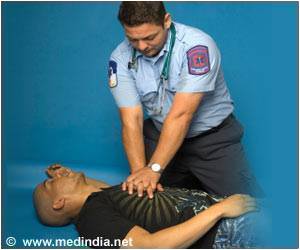
"In the U.S. alone, over 8,000 children a year have a cardiac arrest, but providers may encounter such a catastrophic event only once or twice in their careers," said the study's senior author, Vinay M. Nadkarni, M.D., a critical care and resuscitation science specialist at The Children's Hospital of Philadelphia. "So it's crucial to keep those front-line providers trained and ready to respond. This new approach will assist with that."
The research team carried out the EXPRESS study in 14 research centers in North America, publishing their results online April 22 in JAMA Pediatrics. The EXPRESS (Examining Pediatric Resuscitation Education Using Simulation and Scripted Debriefing) researchers found that trainees in simulation exercises using a child-sized mannequin retained more knowledge if the crisis simulation leaders used scripted debriefings.
"A debriefing is the most important part of a simulation experience, and gives participants an opportunity to reflect on what they did right and what needs improvement," said Adam Cheng, M.D., of Alberta Children's Hospital and the University of Calgary. Cheng, the study's principal investigator, added that, "In a scripted debriefing, the words and sentences are phrased in a very deliberate way that helps learners reflect and think analytically about their performance and about handling emergency situations."
Nadkarni noted that the teaching method, called "advocacy inquiry," is designed to pull out a rationale from students to explain their decisions. "This avoids the common teaching technique of 'guess what I'm thinking.' We've taken a sophisticated interactive teaching method and distilled it into a script that can be readily used by novice instructors."
Many of the instructors—physicians, nurses, emergency medical technicians and paramedics—are not highly experienced teachers. But they have a broad reach: some 280,000 instructors teach these programs around the world, typically to a group of 10 trainees each. In North America, about half a million health care workers take the Pediatric Advanced Life Support (PALS) course per year, featuring emergency simulations on lifelike mannequins.
Advertisement
In addition to comparing scripted to nonscripted debriefing, the researchers also compared "high-realism" to "low-realism" simulation. In the high-realism groups, the instructors used SimBaby, a computerized infant mannequin, with all the functions active, such as heart sounds, blood pressure, and breath sounds; in the low-realism groups, most of SimBaby's functions were turned off.
Advertisement
One limitation of the current study, concluded Nadkarni, is that it measured educational outcomes, not clinical outcomes in patients. Further research will determine how well the improvements in education translate into better care and better outcomes for children.
Source-Eurekalert













